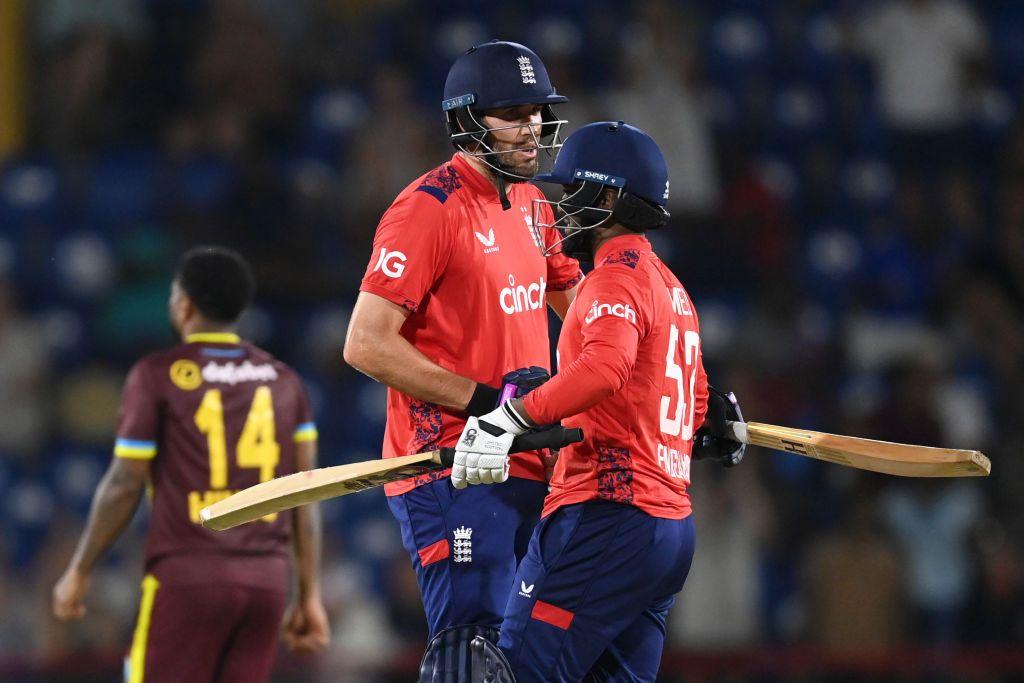Discover Pandipedia
Pandipedia is the world's first encyclopaedia of machine generated content approved by humans. You can contribute by simply searching and clicking/tapping on "Add To Pandipedia" in the answer you like. Learn More
Expand the world's knowledge as you search and help others. Go you!

Managing time efficiently is crucial in today’s fast-paced world, where distractions are abundant, and expectations are high. To effectively utilize your time, a structured approach towards planning and execution is necessary. Here are some strategies based on effective time management techniques.
Establish a Daily Schedule
.png)
Creating a well-defined daily schedule is foundational for efficient time management. A daily schedule acts as a roadmap for your day, helping you to structure your time and allocate it effectively across various tasks.
Framework for Your Day
Your daily schedule can vary in detail but ultimately serves to identify what needs to be accomplished and when. Set times for starting and ending your workday, which sends a signal to your mind and body that it’s time to focus. Choose a consistent start time to improve communication and set clear expectations for your availability[1][7].
Template Method
One efficient way to manage your time is by using a daily schedule template. This helps you streamline your tasks and gives you a clear structure to follow[10]. Your schedule does not have to be overly rigid but should include both professional and personal commitments, ensuring a balance between the two[4][5].
Prioritize Tasks
![18 Time Management Tips to Boost Productivity [2024] • Asana 'a graphic design of different shapes and colors'](https://assets.asana.biz/m/5fb3f1aaefd177a5/webimage-article-productivity-time-management-tips-2x.jpg)
Effective prioritization is essential. Not every task holds the same weight, and recognizing which tasks are most important will allow you to allocate your time strategically.
The Eisenhower Matrix
One popular method for prioritization is the Eisenhower Matrix, which categorizes tasks into four quadrants based on their urgency and importance. This helps you focus on what truly matters, allowing you to increase your productivity and reduce stress[9]. According to this matrix:
Do First: Urgent and important tasks
Delegate: Urgent but less important tasks
Delete: Tasks that are neither urgent nor important
By focusing on high-impact tasks first and making conscious decisions about where to spend your time, you can significantly improve your productivity[8].
Use Time Management Techniques
Incorporating specific time management techniques can make a substantial difference in how you manage your day.
Timeboxing
Timeboxing involves assigning fixed time slots for specific tasks, helping you create urgency and focus[2][9]. For example, allocate two hours to work on a project, and once that time elapses, review your progress and adjust accordingly. This technique encourages you to stay on task, combat procrastination, and maintain focus.
Pomodoro Technique
Another effective technique is the Pomodoro method, which consists of working for a concentrated 25 minutes followed by a 5-minute break. These short bursts of work can help enhance focus and energy, making it easier to handle complex tasks[4].
Batching Tasks
Batch similar tasks together to minimize distractions caused by context switching. By grouping related work, such as emails or routine administrative tasks, you streamline your efforts and reduce the mental load[9].
Implement Flexibility in Your Schedule
While maintaining a structured schedule is important, flexibility is equally vital. Life is unpredictable, and having some buffer time in your daily plan allows you to adapt when interruptions occur[8]. For instance, you might block off a 30-minute slot between appointments where no tasks are scheduled, providing room for adjustments.
Adapting Priorities
Regularly assess your tasks and be prepared to shift priorities as needed. This adaptation can be especially crucial when new deadlines or urgent projects arise. Keeping an ongoing list of essential tasks and using a tool like a digital planner can facilitate this flexibility[5][10].
Eliminate Time Wasters
Identifying and minimizing time wasted on low-value activities will free up more time for important tasks. Common distractions include excessive email checking, social media, and ad-hoc meetings that could be streamlined or eliminated altogether.
Email Management
To manage your inbox efficiently, set specific times during the day to check emails instead of checking them constantly. This practice reduces interruptions and allows you to focus on more high-priority tasks[4][9].
Creating Boundaries
It's important to set boundaries with colleagues about your time. Politely declining requests that detract from your core responsibilities can help maintain your focus and prevent burnout[9][10].
Reflect and Adjust Regularly
At the end of each day or week, take time to reflect on your accomplishments and the challenges faced. This reflection will help you adjust your methods and prioritize tasks that align better with your goals in the future.
Tracking Progress
Keeping a log of your completed tasks can boost motivation and provide a sense of achievement[5]. By regularly reviewing your success and looking at areas where you can improve, you will gain insights that will guide your future scheduling efforts.
Effective time management is a dynamic process that requires constant evaluation and adjustment. By implementing structured scheduling, prioritizing tasks, using appropriate techniques, incorporating flexibility, and eliminating waste, you can take control of your time and be more productive in your daily life.
Let's look at alternatives:
- Modify the query.
- Start a new thread.
- Remove sources (if manually added).
- Request a manual search from our human research team.

Search ads help to satisfy demand, while brand advertising, display advertising, helps to create demand.
Dr. Hal Varian[1]
Search advertising is one of the world's greatest business models ever created
Mike Roszak[2]

Advertisers are losing control because of the multiple different reasons, again, they're losing control.
Professor Jerath[1]
Search ads and display ads are not seen as substitutable by booking.com.
Professor Jerath[1]
Google's financial incentive to break that promise is pretty evident.
Dr. Baker[4]
Let's look at alternatives:
- Modify the query.
- Start a new thread.
- Remove sources (if manually added).
- Request a manual search from our human research team.
Get more accurate answers with Super Search, upload files, personalised discovery feed, save searches and contribute to the PandiPedia.
Let's look at alternatives:
- Modify the query.
- Start a new thread.
- Remove sources (if manually added).
- Request a manual search from our human research team.

Yes, neurons can play games like Pong. Cortical Labs' original DishBrain prototype trained cell cultures to play Pong in a simulated environment[2]. The neurons learned to track the ball and control a paddle, demonstrating goal-oriented behavior in vitro[2]. In this instance, the neuronal cells on a synthetic chip appeared to have become goal-directed, a step closer to intelligence[1].
In a real-time closed-loop system, electrical stimulation was delivered into cultures of neural cells, telling the neural cells the x and y positions of the ball relative to the paddle[1]. In response to this stimulation, the cells produced electrical activity, which was read by the detector and used to move the paddle[1]. The result was that the neural cells appeared to self-organize their activity and got better at playing the game, supporting this as at least one driver behind intelligent behaviour[1].
Let's look at alternatives:
- Modify the query.
- Start a new thread.
- Remove sources (if manually added).
- Request a manual search from our human research team.
The cricket rivalry between England and the West Indies is one of the most storied in the sport, dating back to the late 19th century. The first Test match between the two nations occurred in 1928, marking the beginning of a competitive relationship that has yielded numerous memorable contests. Initially, England dominated early encounters, achieving notable victories in the inaugural series by whitewashing the West Indies 3-0[1][6].
As the West Indies began to develop their cricketing capabilities, the dynamics started to shift. The team slowly emerged as a competitive force throughout the mid-20th century, culminating in memorable series and matches that shaped the narrative of their rivalry.
The Rise of West Indies Cricket

The 1970s and 1980s are often regarded as the golden era for West Indies cricket. Under the leadership of legendary players such as Clive Lloyd, Viv Richards, and Joel Garner, the West Indies established themselves as the premier team in the world. They not only dominated England but also the global cricketing landscape. Their fast bowling attack, often referred to as the 'fearsome foursome,' terrorized batsmen globally[2][4].
Key moments during this period include the 1976 Test series, where the West Indies won decisively, and the 1984 series, where they completed a clean sweep with a 5-0 victory over England[6][10]. This period solidified the West Indies' status as a cricketing powerhouse, with the team also winning two World Cups in 1975 and 1979.
Shifts in Power and Competitive Contests

Despite the West Indies' dominance, England worked hard to regain their competitive edge. The early 1990s were marked by England's resurgence, with the team winning various Test matches and series against the West Indies. This included a series in 1991 that saw closely contested matches, highlighting the competitive spirit between the two nations[6][9].
The rivalry continued to evolve into the new millennium, with both teams experiencing highs and lows. England's 2000 Test series victory against the West Indies marked a significant turning point, demonstrating that they could compete with the once-dominant West Indies[3][4].
Notably, the 2004 and 2007 Test series saw England achieve significant victories, further challenging the West Indies' historical supremacy, concluding with 4-0 wins in both series[10][11].
Recent Developments and Modern-Day Context
In more recent years, the competitive landscape has shifted again. England has embraced a more aggressive style of play, particularly in limited-overs formats, culminating in their victory in the 2019 Cricket World Cup, which prominently featured encounters against the West Indies during the tournament[2][8].
The revival of West Indies cricket in limited-overs cricket is evident with their successes in T20 competitions, where they have showcased their explosive batting capabilities. Famous players such as Chris Gayle and Kieron Pollard have redefined the limits of batting in T20 formats, making the West Indies a formidable opponent[3][6].
Cultural and Historical Significance

The rivalry between England and the West Indies extends beyond mere statistics and results; it reflects deep historical and cultural connections. The early matches symbolized the colonial relationship between England and its Caribbean territories. Over the years, cricket has served as a unifying sport within the Caribbean community, while also highlighting the struggles and triumphs faced by West Indian cricketers against the backdrop of racial and social issues[2][4].
This critical historical context gives depth to the continued rivalry, with each match representing not only a battle for supremacy on the cricket field but also a reflection of the social and political nuances between the two nations.
Conclusion
The England vs. West Indies cricket rivalry embodies a rich tapestry of sporting excellence, cultural significance, and memorable moments. As both teams continue to evolve, with England often leading in modern formats and West Indies demonstrating flashes of their historical prowess, the rivalry promises to remain a thrilling spectacle for cricket fans around the globe. Each encounter bears the weight of history while also shaping the future narrative of cricket, ensuring that this rivalry remains one of the most engaging in the sport's rich history[4][5].
Let's look at alternatives:
- Modify the query.
- Start a new thread.
- Remove sources (if manually added).
- Request a manual search from our human research team.

The French and Indian War was sparked by territorial disputes between British and French settlers in North America, particularly over the Ohio River Valley. The conflict intensified when the French built Fort Duquesne at the confluence of the Allegheny and Monongahela rivers, which the British viewed as encroachment on their claimed territories[6]. A series of skirmishes, including the Battle of Jumonville Glen in May 1754, where George Washington ambushed a French patrol, marked the beginning of hostilities[4][3].
These tensions compelled the British to send military forces to remove the French from the region, leading to the escalating conflict that became the French and Indian War[5][2].
Let's look at alternatives:
- Modify the query.
- Start a new thread.
- Remove sources (if manually added).
- Request a manual search from our human research team.
Get more accurate answers with Super Search, upload files, personalised discovery feed, save searches and contribute to the PandiPedia.
Let's look at alternatives:
- Modify the query.
- Start a new thread.
- Remove sources (if manually added).
- Request a manual search from our human research team.

Recent developments in climate technology include the introduction of next-generation solar technologies like perovskite tandem solar cells, which enhance efficiency and reduce costs by combining perovskites with traditional silicon[1]. Additionally, enhanced geothermal systems are emerging, enabling more widespread access to geothermal energy through human-created sources that increase heat extraction[1].
The World Economic Forum highlights six digital technologies critical for climate adaptation, including AI for advanced weather models, drones for monitoring climate risks, and the Internet of Things for real-time data collection[2]. Innovative solutions like a supercapacitor made from cement and carbon black for energy storage are also being researched[3]. Moreover, a new 2023 report aims to assess the effectiveness of technology transfer and its role in climate action[4].
Let's look at alternatives:
- Modify the query.
- Start a new thread.
- Remove sources (if manually added).
- Request a manual search from our human research team.

The African country that starts with the letter 'K' is Kenya.
Let's look at alternatives:
- Modify the query.
- Start a new thread.
- Remove sources (if manually added).
- Request a manual search from our human research team.

People prefer handcrafted goods for several reasons. First, they value the uniqueness and quality of handmade items, which carry the individual touch and story of the artisan. As one source notes, 'no two handmade items are the same,' making them special and personal compared to mass-produced products[4]. These items also support local economies and artisan livelihoods, which fosters a sense of community and connection between consumers and makers[1][2].
Additionally, handcrafted products are often made with sustainable materials and practices, reducing environmental impact[3]. This aligns with a growing consumer preference for eco-friendly choices and mindful spending, as many buyers are 'respecting every dollar as an extension of ourselves'[1].
Let's look at alternatives:
- Modify the query.
- Start a new thread.
- Remove sources (if manually added).
- Request a manual search from our human research team.